skin & infection support
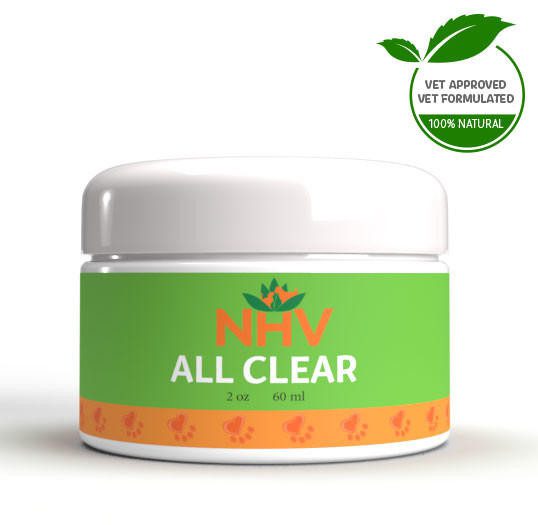
free shipping over $100 (USA & Canada)
1-877-937-4372 the pet expert hotline
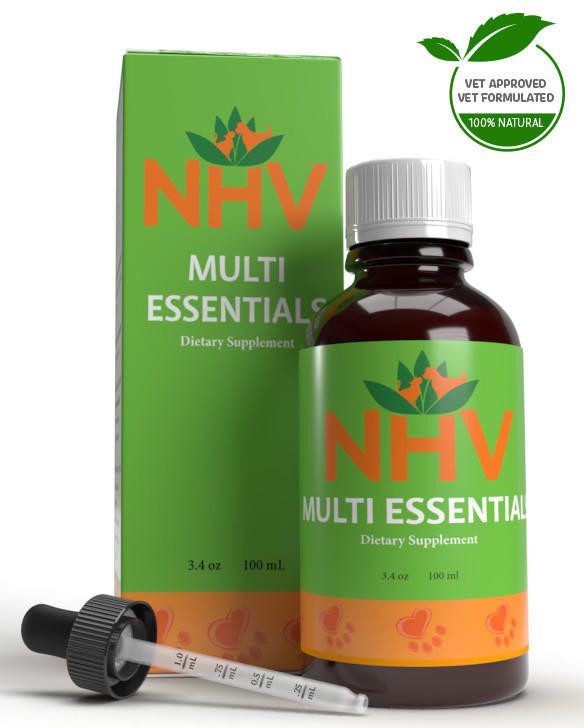
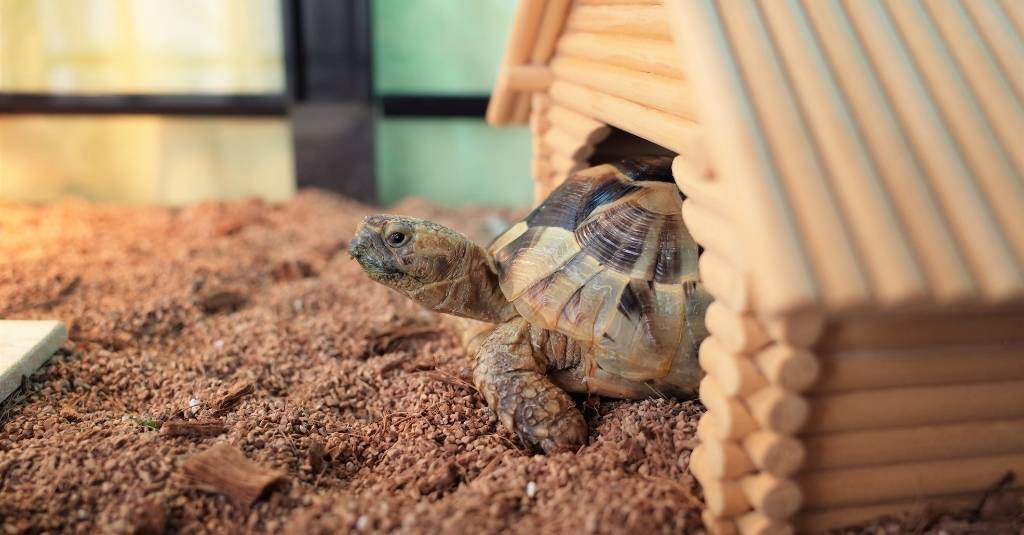
At NHV, we meet all kinds of amazing pet parents and pets. And although turtles may not be on the traditional list of pets, such as dogs or cats, we’ve had the pleasure of meeting some amazing and dedicated turtle rescuers and guardians. Turtles are lovable creatures that can make a wonderful addition to any family that knows the specialized care they need. To help you get ready before bringing a pet home a new turtle or to learn more about your shelled friend, here are some tips on how to care for a turtle.
But before anyone rushes out and gets a turtle, it’s important to remember that they are long-term commitments. A turtle can live up to 50 years, and some species of turtles can live up to 100 years and so they need a lifetime of specialized care. They are also ‘wild’, and sadly the pet trade of turtles can severely negatively impact their populations and many turtles in the pet trade suffer due to unhealthy conditions. Turtles have been on the planet for over 200 million years, which means that these fascinating creatures roamed the earth at the same time as the dinosaurs.
Aquatic turtles need to have their own habitat or space, which can be an aquarium or a terrarium.
The size of the terrarium or aquarium must be sufficient for the turtle to have enough space to swim and a dry area to rest. It must have a size of at least 3 or 5 times the length of the turtle. The bigger space, the better living conditions the turtle will have.
Most of the diseases of aquatic turtles are related to their basic needs, such as not providing sunlight in the environment or inadequate feeding.
A pool with enough depth is also important so that they can swim peacefully without colliding with the decoration that the habitat may have. There must also be a dry area above the swimming area where the turtle can dry, have some sunbathe, and rest.
In addition, to help prevent your turtle from developing diseases due to poor hygiene, the water should be kept as clean as possible, and a filter system may help to clean the water. It is also important to add elements in the terrarium such as castles or plants (verify with a specialist which kind of plants are not toxic and adequate to add to the turtle’s environment) and create an original and unique environment.
The turtle’s environment is particularly important, so we must consider the following:
The water temperature must be warm, between 80° to 98°F (26° – 37°C), and there must be a dry area of the aquarium or terrarium. It is important that the temperature of the water does not vary much with the temperature of the environment since a sudden change is not good for the turtle. Under no circumstances, should a turtle be subjected to temperatures below 5°C or above 40°C.
Sunlight must be accessible to the turtle, and a full-spectrum UV light source is necessary for the synthesis of vitamin D to calcium absorption. It can keep their bones and shell healthy. If you cannot find a good position for the aquarium to receive natural sunlight, you can choose to buy a lamp that simulates the same effect.
It is possible to find turtle food at any pet store; they are specific and nutritional balanced for them. You can also vary their diet by incorporating other ingredients such as raw and low-fat fish, vegetables, crickets, larvae, and even small insects.
If you want to feed any of these foods, ask a veterinarian specialist first who can advise you. If you see that your turtle accepts raw fish, but the turtle does not accept the commercial food that can be found in a pet store, you can mix both and try to give it to the turtle.
If the turtle is small, she/he should be fed once a day, and if he/she is large, she/he should be fed three times a week. Remember that you must remove all the remaining food from their housing to prevent it from becoming excessively dirty.
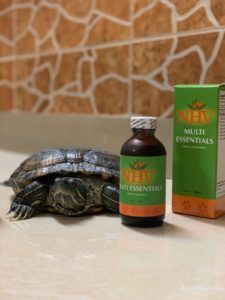
Most of the diseases of aquatic turtles are related to their basic needs, such as not providing sunlight in the environment or inadequate feeding.
If a turtle becomes ill and has other turtles in the aquarium, the sick turtle should be separated from the other turtles until it is healed.
Skin: In case the turtle has a skin lesion, it is important to visit the vet that will recommend the correct treatment. The vet usually prescribes an ointment that is water-soluble and helps in healing and does not harm the turtle. NHV All-Clear Ointment may be helpful for turtles suffering from skin disease, bacterial and fungal skin infections.
Shell: The softening of the shell may be due to a lack of calcium and light. Sometimes small spots may also appear on it. It is recommended to increase exposure to sunlight. On the other hand, discoloration of the turtle’s shell may be caused by the presence of chlorine in the water or a lack of vitamins. Finally, if a white layer on top of the shell is observed, it may be because your turtle has fungi, due to excessive humidity or lack of sunlight. NHV Multi Essentials and PetOmega 3 help to fill the nutritional voids and may help to avoid shell problems related to vitamin deficiency. Also, applying all clear ointment on their shell may help to treat the fungal infection.
Eyes: Eye infection is also a common problem in turtles, it is generally seen when their eyes are closed for a long period of time. The cause may be a lack of vitamin A or poor hygiene in the environment, in this case adding vitamins to their diet and increasing hygiene may be helpful. As it is also an infection related to lack of vitamins, NHV Multi Essential along with Ey-Eas may decrease the eye infection.
Respiratory: If it is observed that the turtle secretes mucus from its nose, breathes with its mouth open, and decreases its activity, it is important to move the terrarium to a place and increase the temperature to 25ºC. Resp-Aid may help naturally the turtle’s respiratory system fighting against infection.
Digestion: Turtles can also have constipation due to the diet. If they have a lack vitamin and fiber, they will be prone to constipation. On the other hand, diarrhea may be caused by excess fruit, lettuce, or eating a non-balanced diet. Offering a balanced diet and good quality water are possible solutions. Also, adding Maris may be helpful, as it helps pets suffering constipation.
Anxiety or stress: If the turtle presents a change in his/ her behavior, such as restlessness, move the turtle to a calm place, so that its immune system will not be affected. NHV Lesstress and Matricalm is good support for turtles suffering anxiety and stress.
Egg retention: This happens when the egg breaks inside the turtle. It can be caused by a lack of vitamins or dietary deficiency. In this case, you should consult a veterinarian as soon as possible, as it can be life-threatening. In this case, NHV Multi Essentials and PetOmega 3 also may help, as the retention may be related to the lack of vitamins.
Prolapse: Prolapse can be caused when the reproductive system falls or slip out of place. It usually goes back to its place by itself or with help.
If this happens, it is important to talk with your vet.
Turtles can make amazing companions, but these amazing pets, like any other pet, require a lot of love and attention from us.
Do you have questions about the care and well-being of turtles? Leave us a comment below.
skin & infection support

Cat skin dermatitis and other cat skin problems
buy 2 and save $3
A natural soothing and safe ointment. Helps with various cat skin problems, such as cat dermatitis, skin diseases, bacterial, fungal, parasitic and viral skin conditions. Allergens, fleas, ticks, wounds and scratches, may be the cause of these cat skin problem.


A natural soothing and safe ointment. Helps with various cat skin problems, such as cat dermatitis, skin diseases, bacterial, fungal, parasitic and viral skin conditions. Allergens, fleas, ticks, wounds and scratches, may be the cause of these cat skin problem.

Soothe your cat’s irritated skin with All Clear Ointment, a natural herbal formulation that calms and heals skin affected by bacterial, yeast, and fungal infections. Skin irritation is common in cats and can result from a variety of causes including food allergies and irritants like fleas and ticks.
Made with the finest, organically grown, or ethically harvested herbs. Made specifically for pets, vet-formulated and vet approved.
How to Administer
Topical ointment: Clean and dry affected area(s). Apply to affected area 3 to 4 times per day. It may some times be necessary to shave or trim your pet’s hair so that the All Clear Ointment may penetrate better.
Caution
Do not apply on open or bleeding wounds.
Soothe your cat’s irritated skin with All Clear Ointment, a natural herbal formulation that calms and heals skin affected by bacterial, yeast, and fungal infections. Skin irritation is common in cats and can result from a variety of causes including food allergies and irritants like fleas and ticks.
Made with the finest, organically grown, or ethically harvested herbs. Made specifically for pets, vet-formulated and vet approved.
How to Administer
Topical ointment: Clean and dry affected area(s). Apply to affected area 3 to 4 times per day. It may some times be necessary to shave or trim your pet’s hair so that the All Clear Ointment may penetrate better.
Caution
Do not apply on open or bleeding wounds.
anxiety & aggression support
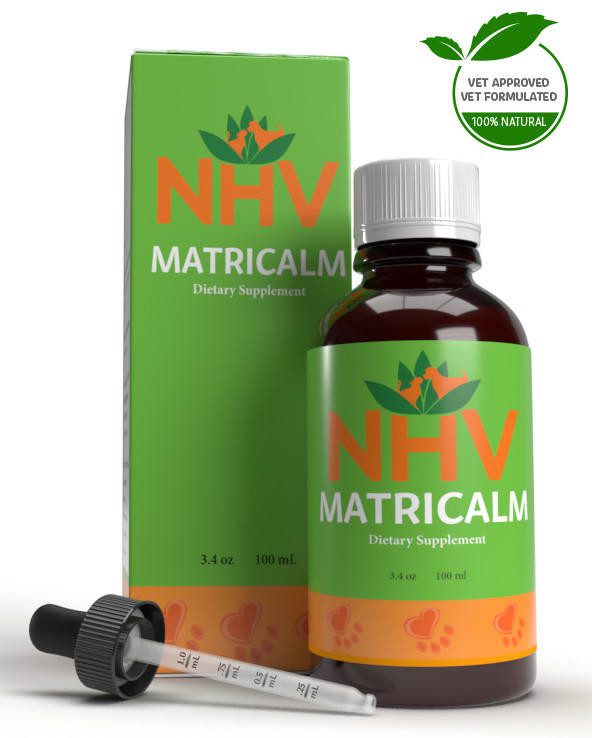
Natural Help for Stress Reduction, Anxiety Relief, Behavioral Problems, and Aggression in Cats
buy 2 and save $3
3 month supply for a small to medium size pet
Matricalm is an all-natural supplement that provides anxiety and stress relief in cats and promotes calm behavior.
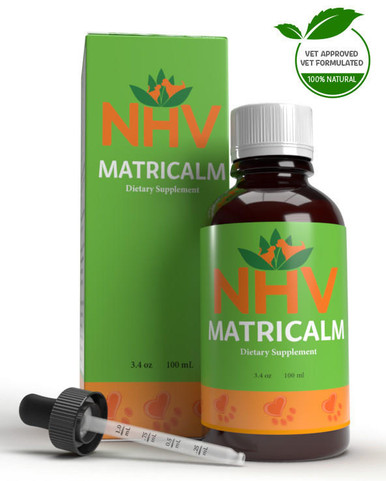
Matricalm is an all-natural supplement that provides anxiety and stress relief in cats and promotes calm behavior.
Help reduce aggressive behavior and provide anxiety and stress relief for your cat with Matricalm, a natural herbal product designed to help reduce excitability in your pet. Cats can become anxious or aggressive when exposed to other animals or to people they are unfamiliar with. When this occurs they may hiss, scratch, howl, or urinate inappropriately.
It’s important to remember that a significant cause of illness in pets results from stress. Helping to keep your cat stress free can help keep them healthier for longer. NHV Pet Experts also often recommend Matricalm for cats dealing with FIV, cancer, kidney issues, hyperthyroidism, and more.
See how NHV Matricalm helped kitty Kimba with yowling and stress.

Chamomile – Contains sedative properties. Chamomile also helps the immune system and has a strong affinity for the nervous system.
Passion Flower – An effective, non-addictive sedative. It helps increase gamma-aminobutyric acid (GABA) in the brain, which helps cause a feeling of relaxation. Passion Flower also has strong anti-inflammatory and pain-relieving properties.
Lemon Balm – An aromatic herb used for nervous disorders, excitability, and anxiety. In addition, lemon balm helps lower blood pressure.
Valerian – Helps stop heart palpitations, relaxes spasms, relieves pain, and regulates the nervous system. Valerian also helps improve sleep latency and sleep quality.
Hops – Tension, anxiety, and stress relief in cats. Hops have traditionally been used to help with mood disturbances, such as restlessness and anxiety.
Select your pet's weight to determine the correct dose.
To be taken twice daily. Determine your pet’s weight and then use the easy chart below to determine the correct dose. This is the minimum dosage.
Pet's Weight Dosage
0 - 15 lb = 0.5 ml
16 - 30 lb = 1.0 ml
31 - 45 lb = 1.5 ml
46 - 60 lb = 2.0 ml
61 - 75 lb = 2.5 ml
Over 75 lb = 3.0 ml
How to Administer
Shake well before use. The easiest method is to use the dropper provided and place the drops into your pet’s food or favorite treat. You can also use the dropper and squirt directly into the pet’s mouth.
Some pets can be finicky. If this occurs, consider hiding the drops in foods most pets love, such as fish, chicken, yogurt or a favorite treat. If your pet only eats dry food, then soak a few kibbles at feeding time.
For Best Results
Herbal dietary supplements are beneficial to the health and well-being of your pet and are safe for long-term use. Every pet responds to natural herbal supplements differently. Therefore, it is important to be consistent and administer the product daily. Supplements generally take two to four weeks to take effect; however, this interval will vary from one animal to the next.
Product Storage
All NHV Natural Pet Products are pure herbal extracts and contain no artificial additives, preservatives, or coloring. Shelf life after opening is six months, and it must be refrigerated after opening.
Cautions and Contraindications
Do not use Matricalm for cats as stress relief in pregnant or nursing animals. Speak to your vet before using our products. A second visit is recommended if your pet’s condition does not improve or deteriorates after the continued use of the supplements.
All information provided by NHV Natural Pet Products is for educational purposes only.
Help reduce aggressive behavior and provide anxiety and stress relief for your cat with Matricalm, a natural herbal product designed to help reduce excitability in your pet. Cats can become anxious or aggressive when exposed to other animals or to people they are unfamiliar with. When this occurs they may hiss, scratch, howl, or urinate inappropriately.
It’s important to remember that a significant cause of illness in pets results from stress. Helping to keep your cat stress free can help keep them healthier for longer. NHV Pet Experts also often recommend Matricalm for cats dealing with FIV, cancer, kidney issues, hyperthyroidism, and more.
See how NHV Matricalm helped kitty Kimba with yowling and stress.

Chamomile – Contains sedative properties. Chamomile also helps the immune system and has a strong affinity for the nervous system.
Passion Flower – An effective, non-addictive sedative. It helps increase gamma-aminobutyric acid (GABA) in the brain, which helps cause a feeling of relaxation. Passion Flower also has strong anti-inflammatory and pain-relieving properties.
Lemon Balm – An aromatic herb used for nervous disorders, excitability, and anxiety. In addition, lemon balm helps lower blood pressure.
Valerian – Helps stop heart palpitations, relaxes spasms, relieves pain, and regulates the nervous system. Valerian also helps improve sleep latency and sleep quality.
Hops – Tension, anxiety, and stress relief in cats. Hops have traditionally been used to help with mood disturbances, such as restlessness and anxiety.
Select your pet's weight to determine the correct dose.
To be taken twice daily. Determine your pet’s weight and then use the easy chart below to determine the correct dose. This is the minimum dosage.
Pet's Weight Dosage
0 - 15 lb = 0.5 ml
16 - 30 lb = 1.0 ml
31 - 45 lb = 1.5 ml
46 - 60 lb = 2.0 ml
61 - 75 lb = 2.5 ml
Over 75 lb = 3.0 ml
How to Administer
Shake well before use. The easiest method is to use the dropper provided and place the drops into your pet’s food or favorite treat. You can also use the dropper and squirt directly into the pet’s mouth.
Some pets can be finicky. If this occurs, consider hiding the drops in foods most pets love, such as fish, chicken, yogurt or a favorite treat. If your pet only eats dry food, then soak a few kibbles at feeding time.
For Best Results
Herbal dietary supplements are beneficial to the health and well-being of your pet and are safe for long-term use. Every pet responds to natural herbal supplements differently. Therefore, it is important to be consistent and administer the product daily. Supplements generally take two to four weeks to take effect; however, this interval will vary from one animal to the next.
Product Storage
All NHV Natural Pet Products are pure herbal extracts and contain no artificial additives, preservatives, or coloring. Shelf life after opening is six months, and it must be refrigerated after opening.
Cautions and Contraindications
Do not use Matricalm for cats as stress relief in pregnant or nursing animals. Speak to your vet before using our products. A second visit is recommended if your pet’s condition does not improve or deteriorates after the continued use of the supplements.
All information provided by NHV Natural Pet Products is for educational purposes only.
overall vitality
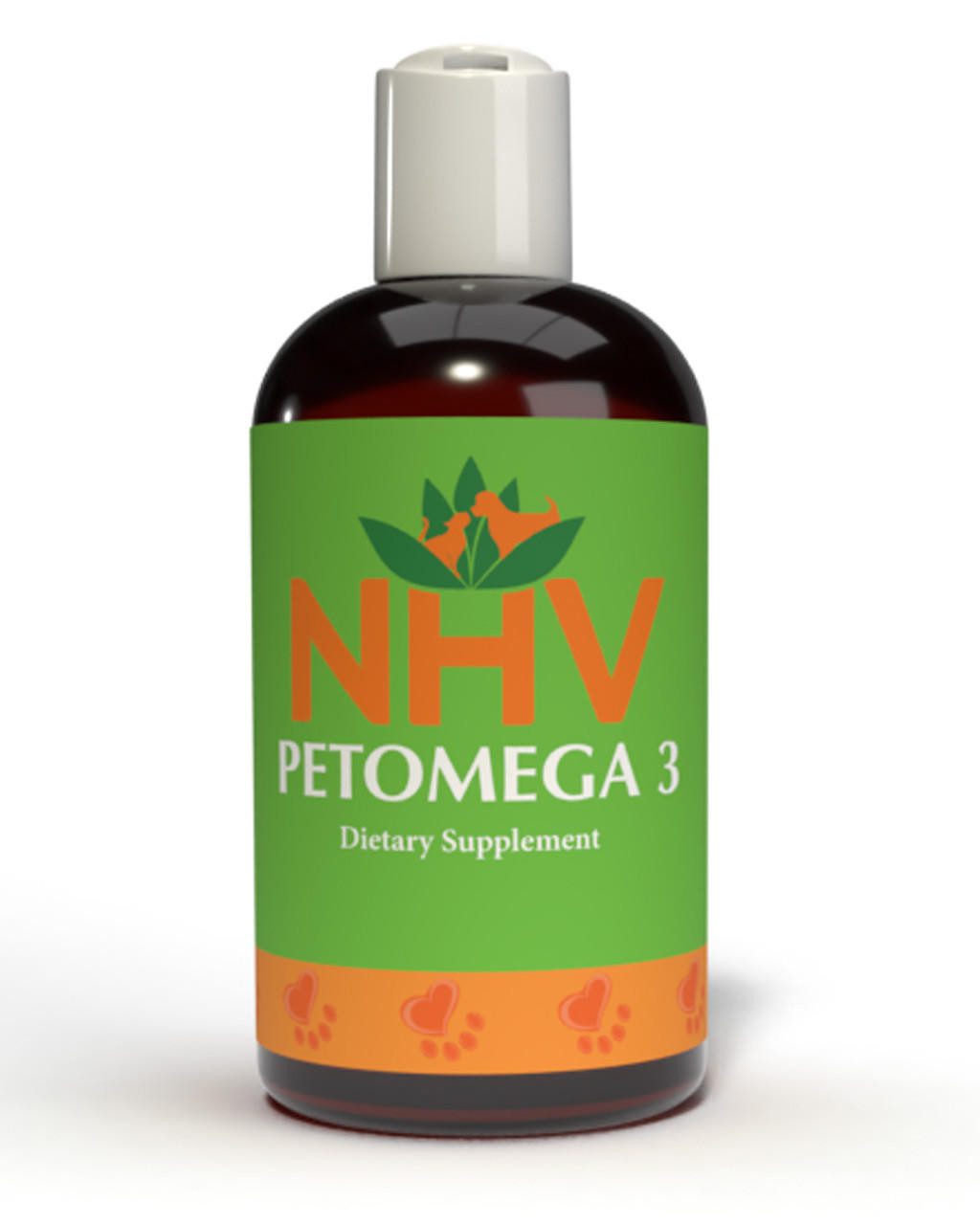
For Overall Health and Well-Being
buy 2 and save $3
An Omega 3 supplement for cats to support their joints, heart, eyes, immune system, and overall organ function.

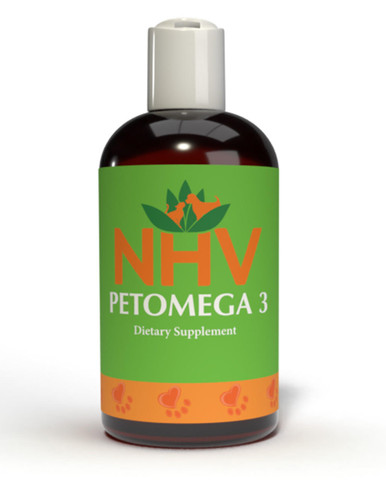
An Omega 3 supplement for cats to support their joints, heart, eyes, immune system, and overall organ function.

Our cat omega 3 supplement is naturally made from the oils of sardines, anchovies, and North Atlantic cod. It’s an excellent source of EPA (Eicosapentaenoic Acid 600mg) and DHA (Docosahexaenoic acid 460mg) essential omega 3 fatty acids. It’s molecularly distilled and cold-pressed to improve the bioavailability
Support your cat with human-grade quality omega 3 fish oil supplements. Many processed pet foods are deficient in this important nutrient. And according to the University of Maryland Medical Center, "It is very important to maintain a balance between omega-3 and omega-6 fatty acids in the diet. A proper balance helps maintain and even improve health."
It’s important for cats to get essential fatty acids through their diet. This omega 3 supplement for cats will help keep them healthy, and even finicky cats actually like to take it.
Benefits of Cat omega 3 supplements:
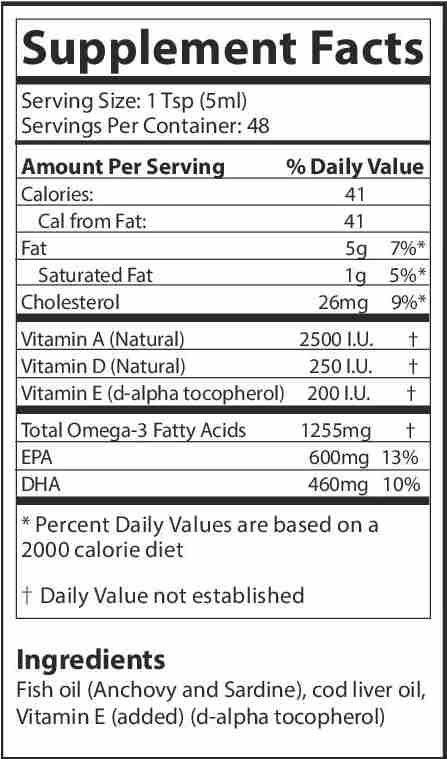
Suggested Dosage: To be taken once per day. Add to food based on weight chart.
Therapeutic Dosage: Double the quantity for maximum period of 4 weeks or follow veterinarian advise.
Pet’s Weight Dosage
0-15 lb = ¼ tsp
15-30 lb = ½ tsp
30-60 lb = 1 tsp
60-90 lb = 1 ½ tsp
How to Administer: Shake well before use. The easiest method is to add the dosage to your pets food. Some pets can be finicky, if this occurs consider hiding the appropriate amount in food most pet’s love such as fish, chicken, yogurt, or a favorite treat. If your pet only eats dry food then soak kibbles at feeding time.
For Best Results
Dietary supplements are beneficial to the health and well-being of your pet and are safe for long-term use. Every pet responds to natural supplements differently, therefore it is important to be consistent and administer the product daily. Supplements generally take two to four weeks to take effect, however this will vary from one animal to the next.
Product Storage
All NHV Natural Pet Products contain no artificial additives, preservatives or coloring. Shelf life after opening is 6 months and must be refrigerated after opening.
Cautions and Contraindications
Avoid During Pregnancy.
Our cat omega 3 supplement is naturally made from the oils of sardines, anchovies, and North Atlantic cod. It’s an excellent source of EPA (Eicosapentaenoic Acid 600mg) and DHA (Docosahexaenoic acid 460mg) essential omega 3 fatty acids. It’s molecularly distilled and cold-pressed to improve the bioavailability
Support your cat with human-grade quality omega 3 fish oil supplements. Many processed pet foods are deficient in this important nutrient. And according to the University of Maryland Medical Center, "It is very important to maintain a balance between omega-3 and omega-6 fatty acids in the diet. A proper balance helps maintain and even improve health."
It’s important for cats to get essential fatty acids through their diet. This omega 3 supplement for cats will help keep them healthy, and even finicky cats actually like to take it.
Benefits of Cat omega 3 supplements:

Suggested Dosage: To be taken once per day. Add to food based on weight chart.
Therapeutic Dosage: Double the quantity for maximum period of 4 weeks or follow veterinarian advise.
Pet’s Weight Dosage
0-15 lb = ¼ tsp
15-30 lb = ½ tsp
30-60 lb = 1 tsp
60-90 lb = 1 ½ tsp
How to Administer: Shake well before use. The easiest method is to add the dosage to your pets food. Some pets can be finicky, if this occurs consider hiding the appropriate amount in food most pet’s love such as fish, chicken, yogurt, or a favorite treat. If your pet only eats dry food then soak kibbles at feeding time.
For Best Results
Dietary supplements are beneficial to the health and well-being of your pet and are safe for long-term use. Every pet responds to natural supplements differently, therefore it is important to be consistent and administer the product daily. Supplements generally take two to four weeks to take effect, however this will vary from one animal to the next.
Product Storage
All NHV Natural Pet Products contain no artificial additives, preservatives or coloring. Shelf life after opening is 6 months and must be refrigerated after opening.
Cautions and Contraindications
Avoid During Pregnancy.
Published: July 22, 2020